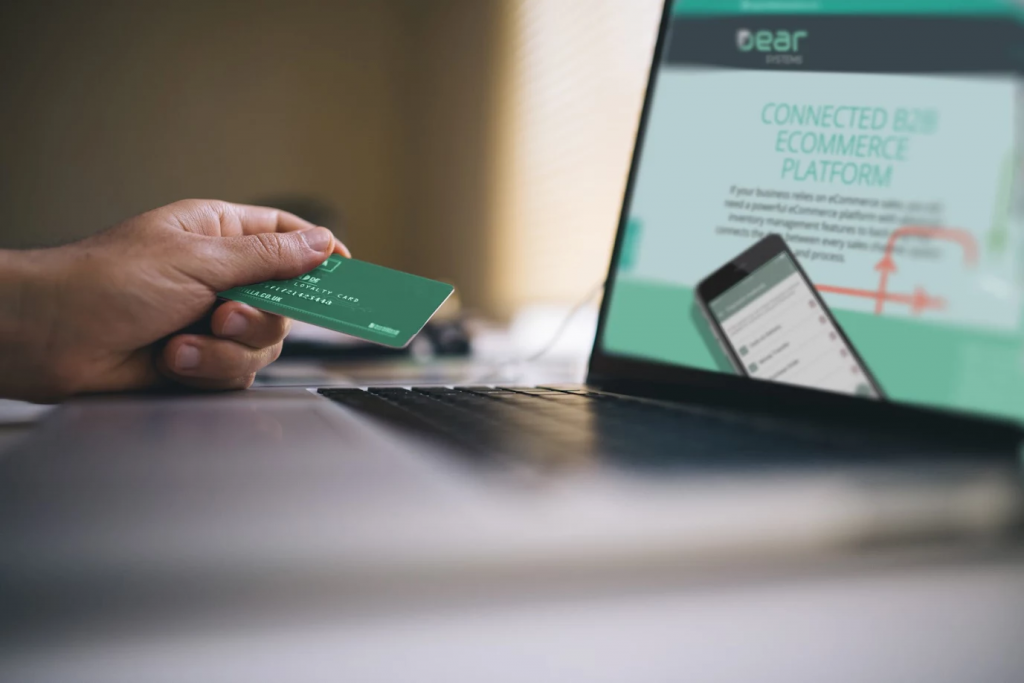Try our Cloud ERP solution today, completely free!
The 1 B2B Payment Problem You Need to Solve Today
B2B payment systems are slowly shifting from manual processes like checks into streamlined electronic processes like credit cards and PayPal.
If you haven’t made the switch yet, it’s time to get onboard if you want to reap the benefits.
According to the report “ePayments Rising: The 2014 Market Report,” 51{cb377218d5687e54e8ee9149518f87201a393a7c1db5e8076e9d750029ec0dc3} of survey respondents in the Accounts Payable (AP) department cited cost savings as the biggest benefit to ePayments.
Streamlined payment processing and increased accuracy and control of payment delivery came in a close second and third.
Unfortunately, many businesses have one glaring problem with their B2B payment system.
If you have this same problem and you don’t address it, then you won’t have a functional and profitable B2B payment system.
What is this problem?
You’re Not Offering Enough B2B Payment Options
If you can’t offer more than 1 payment option, your customers are going to be very unhappy.
A study entitled “Intershop E-Commerce-Report 2016” surveyed 400 B2B decision-makers and found that 47{cb377218d5687e54e8ee9149518f87201a393a7c1db5e8076e9d750029ec0dc3} of participants agreed that the #1 feature for pleasing customers visiting their ecommerce site was flexible payment options, including credit cards and PayPal.
Yet, “a majority (51 percent) of organizations’ B2B payments continue to be made by check” according to the 2016 AFP Electronic Payments Survey.
This is a problem for 2 reasons:
- Most businesses are limiting the payment process for their customers, which could drive away potential prospects.
- Using paper checks makes you more vulnerable to fraud.
Point #2 might seem counterintuitive, but criminals are targeting checks more often than other B2B payment methods.
The 2017 AFP Payments Fraud and Control Survey revealed that “75 percent of organizations experienced check fraud in 2016. This is an increase from 71 percent in 2015 and a reversal of the declining trend in check fraud since 2010.”
As long as companies refuse to adopt electronic B2B payment methods, both their customers and themselves will continue to suffer.
But you don’t have to follow in their footsteps.
If you want to offer your customers a superior buying experience while protecting your company from fraud, then implement the following solution.
The B2B Payment Solution That Will Make Your Customers Happy
There are various things you can do to improve your ecommerce site and your customers’ shopping experience in general, such as:
- Prevent shopping cart abandonment
- Increase social media sales
- Implement strategies for omnichannel ecommerce
If you simply want to improve your B2B payment system and solve the number one problem most buyers have with ecommerce checkouts, then you’re going to need to provide a few specific payment options.
Here are 3 of them:
Purchase Order
A purchase order is a commercial document that explicitly details the type, quantity, and agreed upon price regarding the inventory a buyer is purchasing from a seller.
Your B2B payment system should be set up to allow these types of transactions as they’re very common and most businesses are comfortable using them.
Your B2B payment system and ecommerce platform should also integrate with your accounting and backend software so that all orders and available credit for both online and offline purchase orders are tracked simultaneously.
PayPal
Paypal helps you save time and resources by automating the payment process.
Manual invoicing is error-prone and time-consuming. PayPal lets you send invoices by email that are easily paid with a few clicks of the buyer’s mouse.
Plus, if your B2B payment system on your ecommerce platform is ready to accept PayPal, your customers’ payment information will be secured on PayPal’s servers, not yours – increasing the security of these online transactions.
Cash on Delivery
Cash on delivery (COD) is a convenient payment method whereby the buyer only pays once the seller’s shipment arrives.
This type of B2B payment method helps skeptical buyers take a chance with your brand, especially if you’re not well-established since they don’t have to pay until they receive your products.
Here’s How to Get a Complete B2B Payment Solution
There exists a platform that allows you to provide the all of above B2B payment options and more to your customers – PayPal, COD, credit cards, purchase orders, etc.
It even allows you to track your inventory in addition to every sale and integrates with your accounting applications.
In fact, it allows customers to place orders, view order history, check order status and reorder from previous orders 24/7/365.
It’s a complete ecommerce store, and inventory management system all rolled into one.
If you want it, here’s what to do next…
Optimize Your Payment Methods and Online Sales with Our B2B Ecommerce Platform
You can publish your complete catalog online and allow your customers to easily browse your product listings – with the option of multiple catalogs for different customers. You have full control over the fulfillment process right inside your ecommerce dashboard with pack/pick/ship functionality built-in to the platform. It integrates completely with your inventory management to automate your stocktaking process. If you’re looking for a complete solution, you just found it.
Start your free 14-day trial of DEAR Inventory today!
No Credit Card Required
All Features Included.
Try DEAR for 14 days, completely free!

